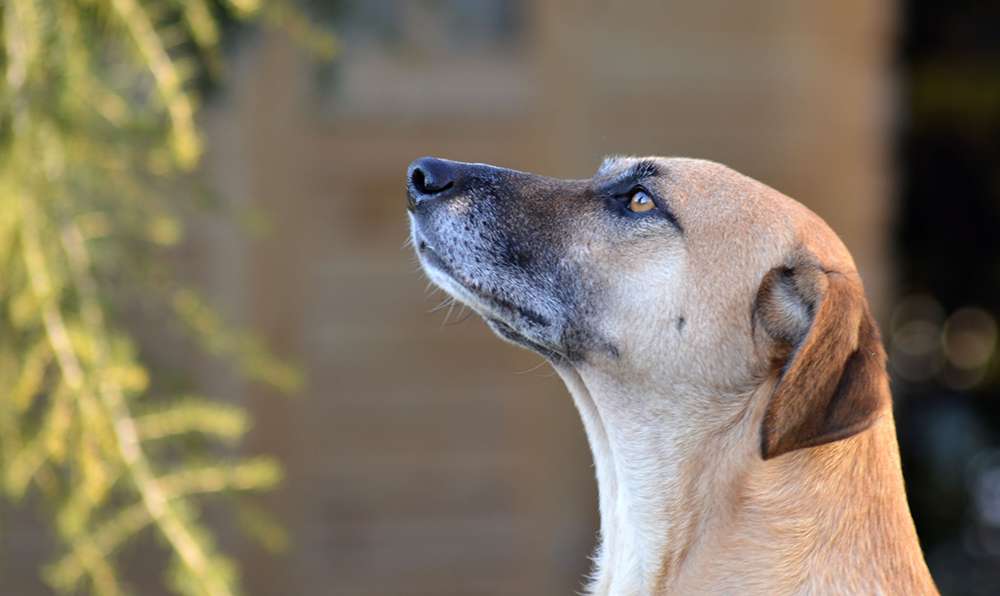
It is a great way to cure selective deafness. And it is achievable for dogs of any age or breed
Does my dog need distraction training?
Have you ever thought your dog was deliberately defying you?
Does he obey you just fine when there’s nothing better on offer? Then do as he pleases when there’s fun to be had?
If so, you are not alone!
Selective deafness in dogs
A lot of dogs are very well behaved up to a point.
But if another dog is available for a game, or if there is a ball to chase, the dog just ignores the commands his owner gives him, and leaves his poor human standing like a lemon in the middle of the park, whilst he runs off to play.
We often refer to this as selective deafness.
If this sounds a bit like your dog. Don’t despair. Help is at hand. But first it helps to look at what we mean by obedience and how we expect to achieve this in our dogs.
What do we expect from an obedient dog
The obedience we expect from a dog is not the same as the obedience we expect between people. What we mean by obedience in people, is more complex.
If a child ‘obeys’ his parent, he is making a conscious decision to submit to that person’s will, to their authority. He may think through the potential consequences before reacting. And that is OK.
With dog training we are not aiming for a rational, well thought out decision. We are not preparing him for life as in independent being. We don’t expect him to make moral choices in years to come. We are always going to protect and control him.
So what we want from a dog is an unthinking reaction to a cue, in all manner of situations.
And getting that reaction takes some time and effort. Yes, there are choices involved in the training process. But the finished product is an automatic response
The obedient dog – an example
The dog, let’s call him Bob, who recalls smartly away from other dogs, might well be described as obedient. But it is not the kind of ‘rational’ obedience that we expect from people.
It is is simply that his owner has put the time and effort into training that dog, to respond in a particular way, under those specific circumstances.
He has been specifically trained to recall reliably away from other dogs, which is not always an easy thing to achieve. We’ll look at that in a moment.
The disobedient dog – an example
If you put Bob in front of a bolting rabbit, or in a field of sheep, he may fail to recall entirely.
Many people (including Bob’s appalled owner) will then describe Bob as disobedient.
Whereas in fact, he was simply not trained to cope with that situation
The trained response
Dogs don’t choose to be disobedient. They are simply not that complex.
If you want your dog to come when you call him even when other dogs are within sight or sound of him, you’ll need to train specifically for this skill
You cannot expect a dog that has learned to recall in an empty field, to continue to do so when a dog walker appears in the distance. He might, and he might not.
The only way to be sure he does, is to train for it.
You need to deliberately set up situations where you can ensure that your dog responds to your cues, in the presence of the distractions that you want him to ignore.
Fake it till you make it
This process of training amongst distractions is often called proofing. And it is achieved by creating artificial training scenarios where you personally have control over the level of the distraction and of the dog’s response to it.
This is not always easy. In fact it’s quite a lot of trouble, which is partly why so few people bother with it.
But it is the only way to get results that you can rely on.
We built up to it in steps, and good dog training programmes focus on getting this right with limited distractions from the start. Only building up the difficulty when your pup is ready.
Taking control of your dog training success
In order to teach your dog to recall away from joggers, or to walk to heel around other dogs you need to train him in controlled situations around joggers or other dogs, where you set him up to win.
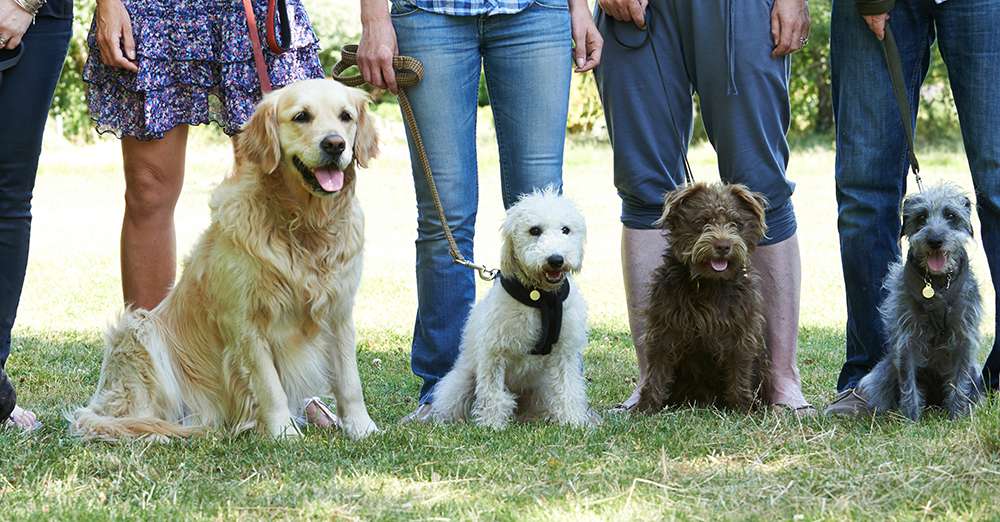
That bears repeating: Don’t just let things just ‘happen’ to your dog – take control!
You need to create situations where you control how many other dogs there are, and what they do next, and where you control what kind of access to those dogs your dog has.
This may seem very ‘fake’ and ‘cheaty’ but it is what you have to do.
Three things to consider when you start dog distraction training
As you start this process of proofing or distraction training, there are three important things to consider. And they all interact with one another. Here they are:
- How aroused is my dog
- How motivated is my dog
- How difficult is my request
When we talk about your dog’s arousal we are not talking about sex here, but about his general level of emotion, be that excitement, or even fear.
If your dog is ignoring your cues think about why, and about how you can make it easier for him to succeed.
For example, if you are trying to teach your dog to walk to heel past other dogs, and he is leaping all over the place like a lunatic, he is not being disobedient. He is simply too aroused to respond to your cues at this point.
Your dog’s arousal, his motivation and the difficulty of the task in hand are all under your control
- You can reduce his excitement by moving him further away from the other dogs
- You can increase the motivation you offer him for focusing on you and maintaining the heel position (e.g. use higher value rewards such as roast chicken or a sardine)
- You can ask the dog for a less challenging response ( a hand touch for example, or simply to glance at your face)
Let’s take a closer look at each of those
Reducing a dog’s arousal or excitement levels
The best way to reduce the dog’s excitement level is usually to move him further away from the distraction.
This isn’t permanent, you won’t always have to pass other dogs with a ten yard clearance. But you need to find a starting point where you dog can respond to you.
Increasing motivation
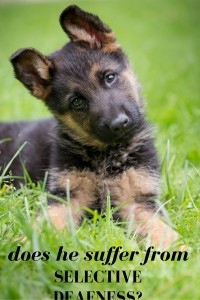
A sardine, a piece of warm roast chicken, his favorite ball, whatever your dog finds irresistible, use it.
This isn’t permanent.
You won’t need to walk around with sardines in your bum bag for the next five years.
You are just making it easier to get that first step right, to get to a point where the dog can break his focus on the distraction and give it back to you.
Once your dog has learned to respond to you in more challenging situations, you’ll be able to use less messy rewards and to offer them less frequently
Making the task easier
Sometimes the best way for you to help your dogs gain skill at responding in a distracting situation is simply to ask the dog for an easier response.
This is especially important in situations where you cannot realistically get further away from the distraction or reduce it’s appeal.
Wait the dog out and reward something very simple. It could a glance or a look in your direction to begin with. It could progress to a hand touch, and then a sit or a few steps at heel.
Again, this isn’t permanent. Just another way of getting that first response on which you will be able to build.
Reduce duration / reward the dog more often
An important aspect to making the task easier, is to ask for tasks with less duration. That one minute SIT can be reduced to three seconds in challenging situations.
You can build duration back up again once your dog is ’winning’ on a regular basis.
Shorter durations tasks enable you to reward the dog more frequently which also helps to keep him motivated to work with you.
Of course, at some point, we need to make tasks more difficult for our dogs in order to make progress with our training. Even experienced trainers sometimes find it difficult to know when to do this.
How to know when to make the task more difficult
If you often find yourself wondering whether or not your dog is ready for a more challenging exercise, international dog trainer Jean Donaldson has a great way of helping you decide when to make things harder for your dog, in a systematic way.
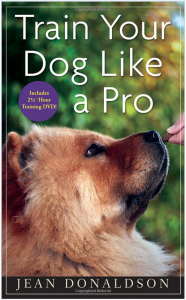
She suggests you do five repetitions in a row of any exercise.
For example, you might ask your dog to touch your hand five times, when there is another dog sitting 20 yards away.
Based on how the dog performs on those five repetition, you will do one of the following.
- Push – go on to the next level of difficulty (for example you could move closer to the other dog)
- Drop – go back to the previous level of difficulty (move further away from the other dog)
- Stick – stay at the current level of difficulty (carry on in your current position)
She suggests you ‘push’ on to the next level if you and your dog get five out of five right, ‘drop’ if you get two or less right, and ‘stick’ if you get three or four right.
Most positive reinforcement trainers use some form of this system, and many keep records or a rough count of the number of successful repetitions they do of a particular exercise. It really does help you figure out when you are ready to move on.
You can adapt this for your own use of course, but the main thing is to have a system and not just to guess wildly whether or not your dog is making progress.
Incidentally, Jean Donaldson’s books are all excellent and Train Your Dog Like a Pro(paid link) is a great read for anyone serious about training an obedient and well behaved dog.
Cheating??
People worry terribly that they are ‘cheating’, or making it too easy for the dog, or that they will be forever dependent on the props and protocols they use in training.
These worries are completely unfounded.
Giving a food reward at three second intervals when you are teaching a young dog to walk past distractions, does not mean giving him food rewards at three second intervals for the rest of his life!
Ensuring success is not cheating, it is just plain common sense.
Find something your dog can do, in a way that he can manage today, and work on introducing more complexity or distraction in the future.
The important thing is to set each ‘fake’ situation up so that the dog can succeed. That means getting a response to your cues, every time.
Dog Distractions Training – A Summary
We kind of need to move away from the concept of ‘disobedience’ in dog training.
Dogs that disobey aren’t really disobedient. They aren’t able to make moral choices or to ponder the probabilities of delayed gratification (or punishment).
They just aren’t fully trained yet.
Distraction training takes time and effort, and it isn’t something you can do alone.
I know that for many of you, dog walks and training time are your ‘alone’ time.
Your special place.
I’m very much the same.
But a fully trained dog cannot be created in isolation. You are going to need some help. Either from like minded friends, or through your local dog training club. This is especially the case for dogs that love other dogs (which includes the majority of gundog breeds)
So, you need to suck it up, and get training for distractions! The sooner you start, the sooner you’ll get there. Don’t worry too much about what lies ahead, just take it one step at a time.
You may find the following articles will help you on your journey
More information
If you enjoyed this article you might like this book.
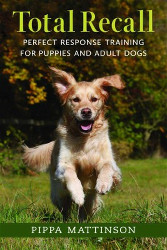
It’s force free and fun.
It includes lots of examples of how to set up training situations to teach your dog to cope with distractions in easy stages.
You can check it out here: Total Recall(paid link)
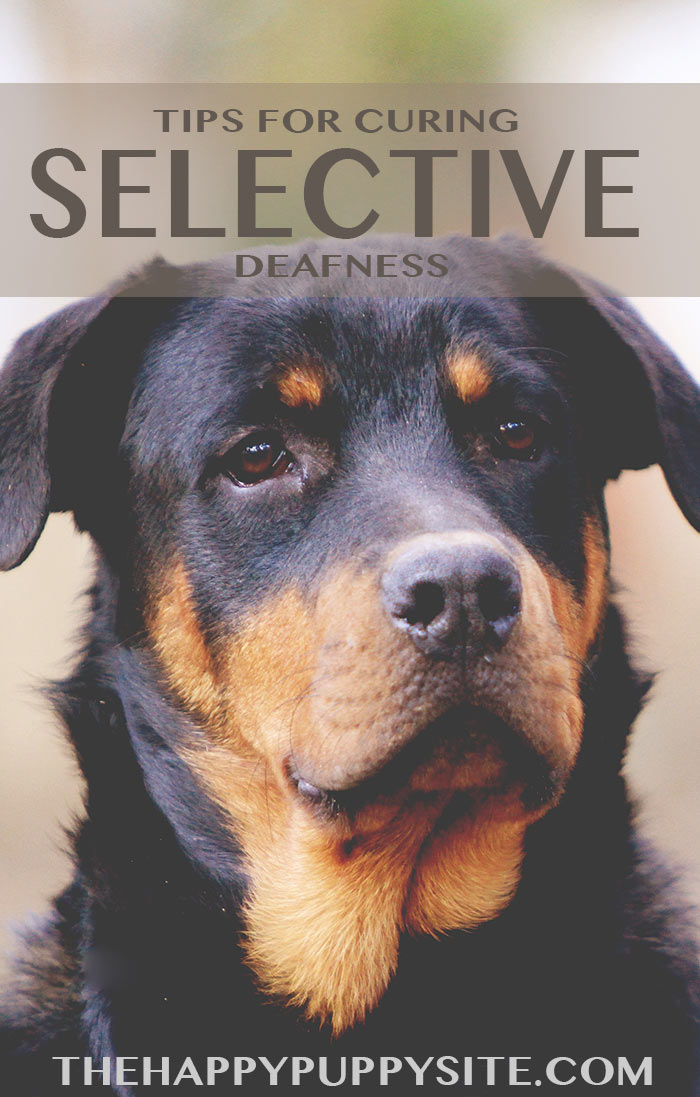
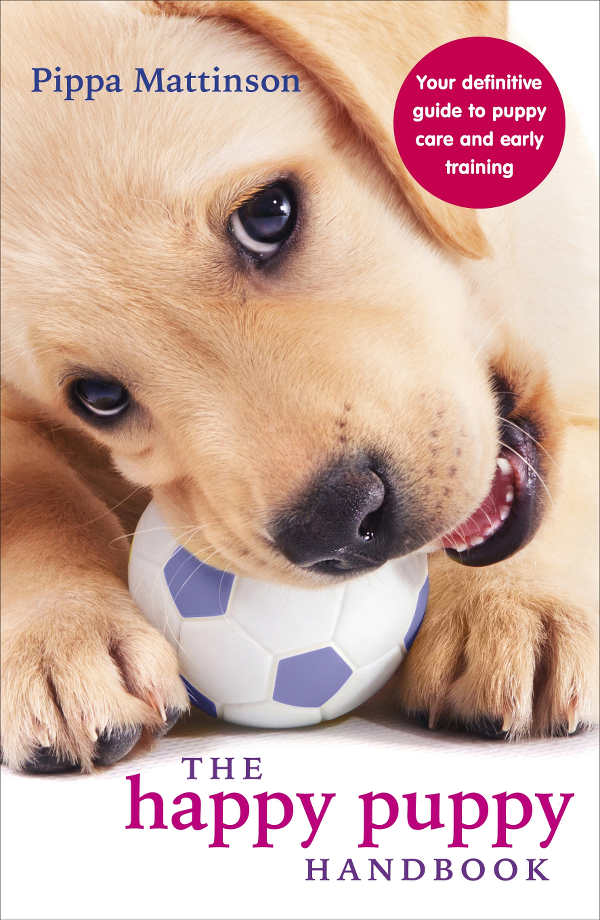
Rita says
Every little bit helps thank
Rita
Kenzie says
This is a lovely article
Clare says
Thanks, this article helps. I have an eight month GSD who is great at obedience – except when other dogs are around. He switches off completely and just wants to play. I have been taking him to training classes to get him used to distractions. It is not a pleasurable experience at all – I feel so out of control. I will stick with it and hope pup begins to calm down when other dogs are present.
Pippa says
Hi Clare, do join the forum where you’ll get help and support with your training.
Sarah says
My 11 month old male Lab ( he was bred to be a gun dog) was very good at recall until about a month ago when he began chasing after other dogs to play and not responding at all to recall. Particularly bad with female dogs. 2 days ago he went racing off after one even after it had gone out of sight and I thought he was safe to be let off the lead. I had him castrated about 10 days ago as he was also trying to hump male dogs !
His recall is good at all other times even out of sight and even when sniffing round things, just not with other dogs. The last couple of days I’ve reinforced the treats on recall and I have been attempting to preempt the running off so if I spot a dog I call him put him on lead and sit out the other dog going past whilst praising and rewarding for not lunging after the other dog. Am considering a long line. Any other suggestions ?I don’t have friends with dogs to practice on.